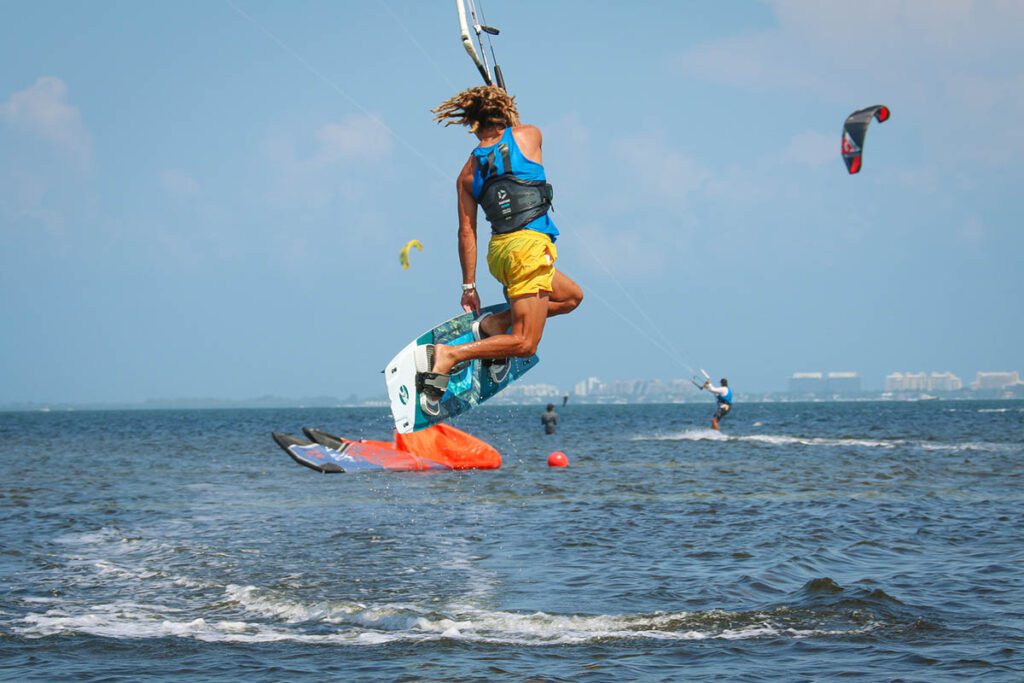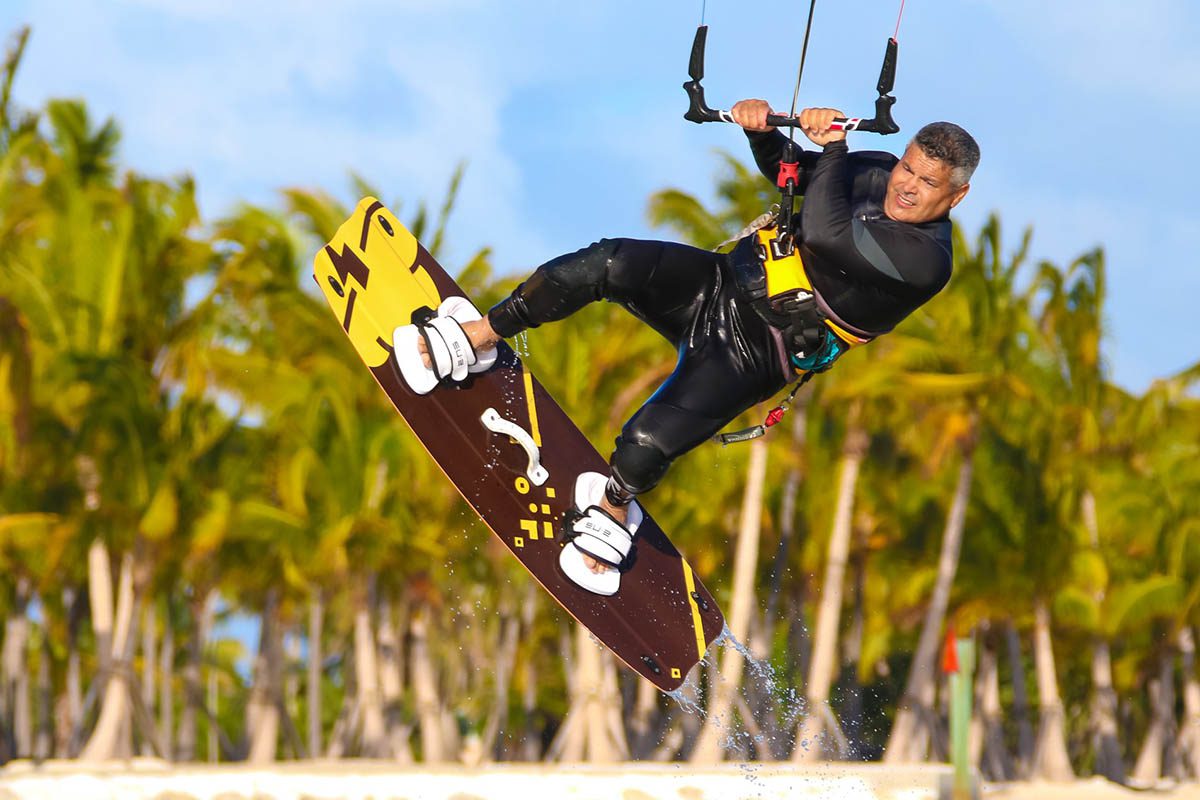
Ai Kitesurfing Kite and Technology
Introduction
Kitesurfing is an exhilarating water sport combining surfing, windsurfing, and paragliding elements. It involves riding a specially designed kiteboard while being propelled by the power of the wind. Over the years, kitesurfing has evolved with advancements in technology and one of the most exciting developments is the integration of artificial intelligence (AI) in kites. In this article, we will explore the advantages of AI in kites, how it enhances the kitesurfing experience, and its impact on the sport as a whole.
Advantages of Ai Kitesurfing Kite and Technology
Enhanced Safety Measures
With AI technology, kitesurfing has become a safer sport. AI-powered kites are equipped with sensors and algorithms that can detect changes in wind patterns, analyze rider behavior, and predict potential risks. By constantly monitoring these factors, AI kites can alert the rider or adjust automatically to ensure a safe and controlled ride. Additionally, AI can assist in emergencies, such as releasing the kite or activating safety mechanisms when necessary.
Optimized Performance
AI technology optimizes the performance of kitesurfing kites by analyzing real-time data and making adjustments accordingly. AI-powered kites can adapt to changing wind conditions, automatically adjust the angle of attack, and optimize power delivery for better control and efficiency. This enhances the kite’s overall performance and improves the rider’s experience, allowing them to focus on riding rather than constantly adjusting the kite.
Intelligent Wind Range Detection
One of the critical advantages of AI in kitesurfing kites is its ability to detect and adapt to the wind range. AI algorithms analyze wind speed, direction, and gusts and make real-time adjustments to the kite’s settings, such as changing the bridle configuration or modifying the kite’s shape. This ensures optimal performance across various wind conditions, making kitesurfing accessible to riders of different skill levels.
Smart Steering and Auto-Pilot
AI kites are equipped with intelligent steering systems that can assist riders in maintaining balance and stability. These systems use AI algorithms to analyze rider inputs, body position, and kite movement, providing real-time feedback and corrections. Some advanced AI kites also have auto-pilot features that automatically adjust the kite’s flight path based on the rider’s preferences or predefined settings, allowing for a smoother and more controlled ride.

Learning and Adaptive Capabilities
AI technology in kitesurfing kites has the potential to learn and adapt to individual riders’ preferences and styles. By analyzing data from multiple sessions, AI algorithms can identify patterns in riding behavior, kite settings, and performance. This data-driven approach enables AI kites to provide personalized recommendations and adjustments, optimizing the kite’s performance for each rider’s unique style.
Real-Time Data Monitoring and Analysis
AI-powered kites can collect and analyze vast data in real-time, providing valuable insights for riders and coaches. Data such as speed, jump height, kite position, and rider movements can be recorded and analyzed to identify areas for improvement, track progress, and even facilitate virtual coaching sessions. This data-driven approach enhances the rider’s performance and improves the sport’s overall development.
Ai Kitesurfing Kite and Technology: FAQs
- Q: Are AI kites suitable for beginners?
- A: Yes, AI kites are suitable for beginners and experienced riders. AI kites’ intelligent features and adaptive capabilities can assist beginners in learning the sport and provide a safer and more controlled experience.
- Q: Can AI kites prevent accidents?
- A: While AI kites can enhance safety measures and provide real-time alerts, accidents can still occur due to unpredictable factors. It is essential for riders to receive proper training, follow safety guidelines, and be aware of their limitations.
- Q: Do AI kites require additional maintenance?
- A: AI kites may require regular software updates to ensure optimal performance. However, the maintenance requirements are similar to traditional kites, and riders should follow the manufacturer’s recommendations for care and maintenance.
- Q: Can AI kites adapt to different kiteboarding styles?
- A: Yes, AI kites can adapt to different kiteboarding styles. AI algorithms’ learning and adaptive capabilities allow the kite to optimize its performance based on individual riding styles and preferences.
- Q: Are AI kites legal in all kitesurfing spots?
- A: AI kites may be regulated and restricted in certain kitesurfing spots. Riders must familiarize themselves with the local rules and regulations before using AI kites in specific areas.
- Q: How much do AI kites cost?
- A: The cost of AI kites can vary depending on the brand, features, and technology involved. AI-powered kites may be relatively more expensive than traditional kites, but the prices are expected to decrease as the technology becomes more widespread.
Conclusion:
Integrating AI technology in kitesurfing kites has brought significant advancements to the sport, enhancing safety, performance, and the overall rider experience. AI-powered kites provide:
- Real-time data monitoring.
- Adaptive capabilities.
- Intelligent features that optimize the kite’s performance across various wind conditions.
While AI kites are suitable for riders of different skill levels, it is essential to follow safety guidelines, receive proper training, and be aware of the local regulations. As AI continues to evolve, we can expect further innovations in kitesurfing technology, making the sport even more exciting and accessible.
Author
Latest entries
 WatersportsSeptember 16, 2024Cabrinha Moto X: Enjoy the Ride
WatersportsSeptember 16, 2024Cabrinha Moto X: Enjoy the Ride WatersportsMay 19, 2024Cabrinha 2024 Moto XL Review: The Ultimate Lightwind Kite
WatersportsMay 19, 2024Cabrinha 2024 Moto XL Review: The Ultimate Lightwind Kite WatersportsDecember 16, 2023Kiteboarding Travel
WatersportsDecember 16, 2023Kiteboarding Travel WatersportsDecember 14, 2023RED BULL KING OF THE AIR 2023
WatersportsDecember 14, 2023RED BULL KING OF THE AIR 2023




